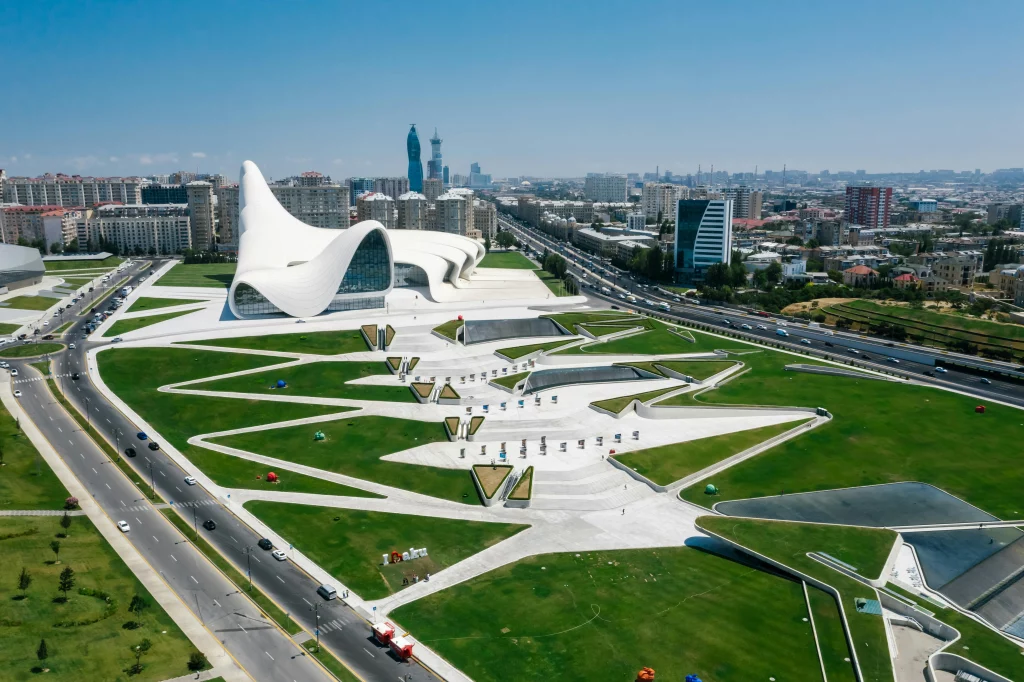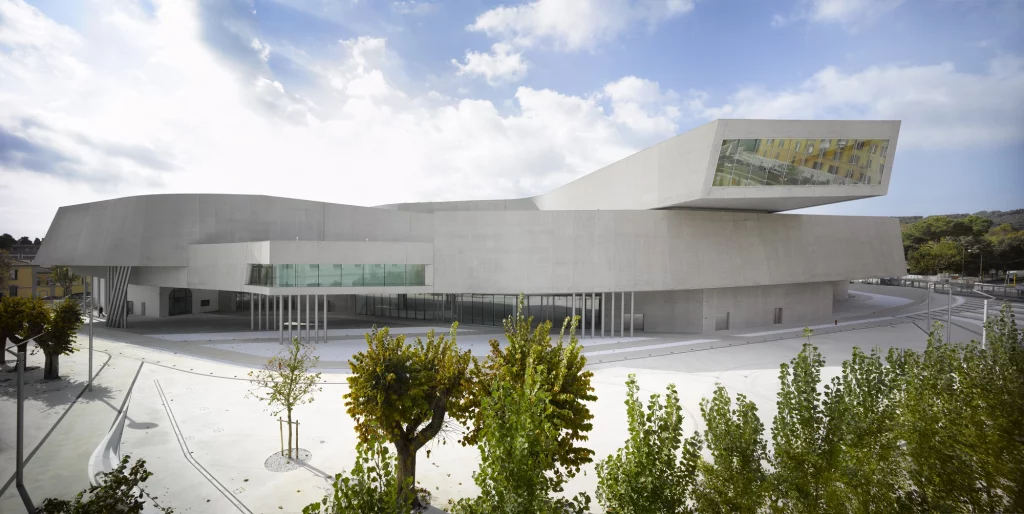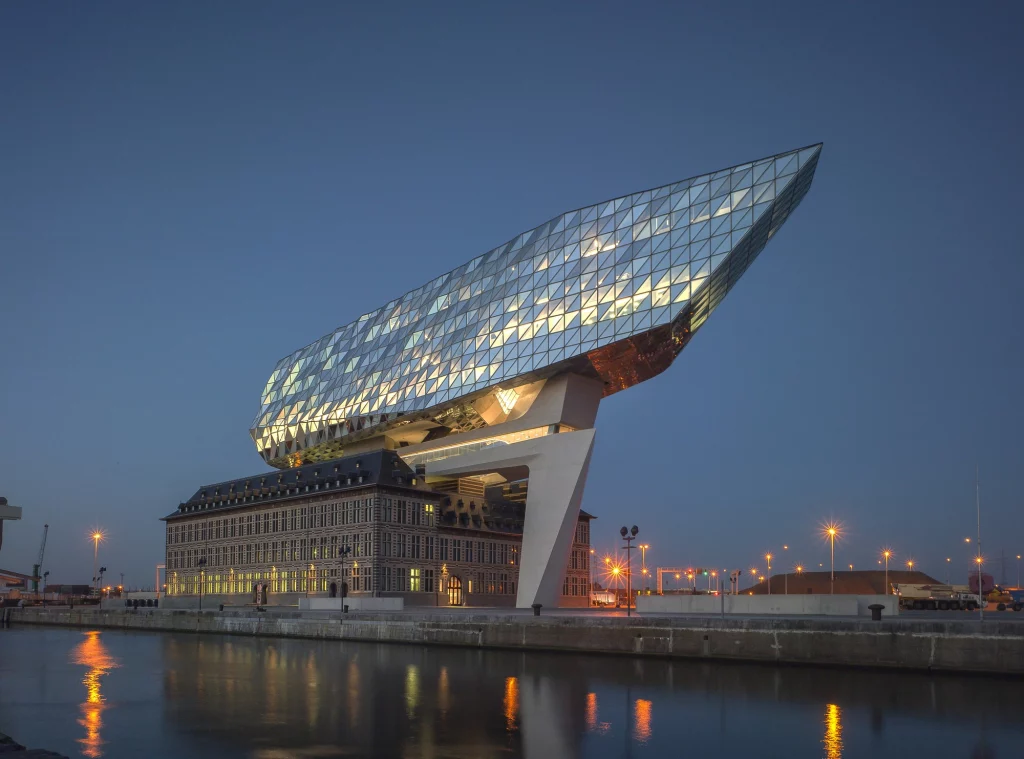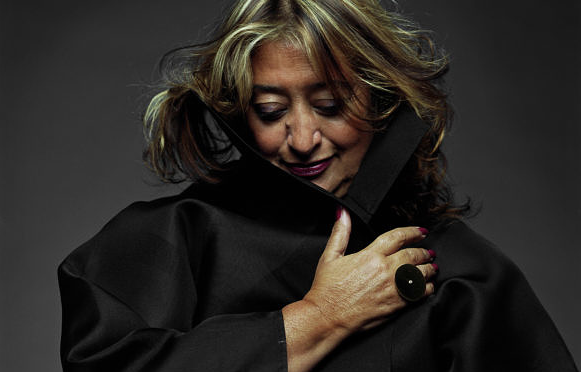Few names in architecture are as instantly recognizable—and as profoundly influential—as Zaha Hadid. Known for her bold, futuristic designs and gravity-defying curves, Hadid redefined what was possible in architecture. But beyond the iconic silhouettes and flowing forms, there was a deeper philosophy guiding her work: a deep respect for nature and its relationship with the urban environment.
Organic Forms in Concrete Cities
Zaha Hadid never believed that urban architecture had to be rigid or disconnected from the natural world. Her buildings often appear to grow organically from the ground—rising, twisting, and flowing like elements in a landscape. Take the look at Heydar Aliyev Cultural Center in Baku: its fluid, wave-like form feels more like a sculpture shaped by wind than a traditional structure of steel and glass.
Hadid believed that nature didn’t just belong outside the city—it could be interwoven into the very fabric of urban life. Through sweeping curves and seamless integration with their surroundings, her buildings bring an unexpected softness to dense, urban settings.

Biomimicry Meets Technology
What set Zaha Hadid apart was how she used technology to echo nature. She harnessed parametric design—complex computer modeling that mimics organic growth—to generate forms inspired by rivers, dunes, and cellular structures. This approach allowed her to design buildings that responded to both human movement and the natural topography of a site.
Projects like the MAXXI Museum in Rome or the Port House in Antwerp or the Heydar Aliyev Center in Baku reflect this harmony. They are not just functional spaces; they are experiences—blending flowing lines with material innovation to create something that feels alive within the urban grid.

More Than Aesthetic: A Philosophy of Flow
For Hadid, “flow” wasn’t just an aesthetic choice—it was a philosophy of living and moving through space. She once said, “There are 360 degrees, so why stick to one?” That mindset allowed her to blur boundaries—not just between walls and floors, but between buildings and their environments.
In her work, green spaces aren’t afterthoughts—they’re integral. She believed cities should be fluid ecosystems, where buildings breathe with their environment and people move with ease.
Legacy and Impact
Zaha Hadid passed away in 2016, but her influence continues to ripple across the world. Her studio, Zaha Hadid Architects, continues to evolve her vision—exploring new ways to merge sustainability, innovation, and urban integration.
In an era where cities face the challenges of climate change, overpopulation, and ecological fragmentation, Hadid’s ideas about blending nature and urban design feel more urgent—and more inspiring—than ever.

Why Her Vision Still Matters
Zaha Hadid didn’t just design buildings. She reshaped how we think about cities, reminding us that nature and urban life aren’t opposites—they’re partners. In honoring her legacy, architects and city planners are increasingly asking: How can we build cities that feel alive?
Zaha showed us one answer—one beautiful, boundary-breaking curve at a time.






